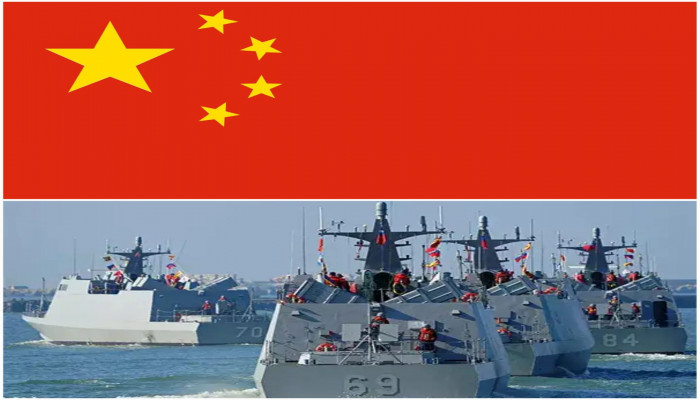Escalation in PMZ waters as Chinese naval aggression stirs fresh tensions with South Korea over maritime claims
- In Reports
- 06:20 PM, Apr 21, 2025
- Myind Staff
China is ramping up its presence in the Yellow Sea by building an enormous steel structure, echoing its assertive moves in the South China Sea. This new construction has sparked fresh tensions with South Korea. According to The Eurasian Times, a recent standoff unfolded after South Korean vessels tried to inspect the structure, leading to a clash between the two nations' coast guards. Citing diplomatic sources, South Korea’s Yonhap news agency reported that the standoff lasted about two hours. The incident took place on February 26 in the Provisional Maritime Zone (PMZ), near Socotra Rock, southwest of South Korea's Jeju Island.
The Provisional Measure Zone (PMZ) is a shared area in the Yellow Sea, called the West Sea in Korea, where South Korea’s and China’s exclusive economic zones (EEZs) overlap. When South Korea sent its research vessel, Onnuri, to investigate a structure in the area, it was stopped by Chinese coast guard ships and civilian boats, using tactics similar to those reportedly used against the Philippine Coast Guard. This led to a two-hour standoff after South Korea deployed its own coast guard ship to the scene. While South Korea defended its inspection as legitimate, China claimed the structure was simply an aquafarm and demanded that the Korean ship withdraw.
In response, South Korea summoned a Chinese Embassy official in Seoul to protest the incident formally. Satellite images have shown that China has built multiple large steel platforms in the PMZ. According to The Eurasian Times, this zone was created under a 2000 agreement allowing both countries to fish and pass through the area until a final maritime boundary is set.
One of the new structures is a large underwater marine cage named Shen Lan 2 Hao, or Deep Blue 2, which stands 71.5 meters tall and is designed for salmon farming. Its size and the equipment supporting it have raised alarms in South Korea. According to the Eurasian Times, the Korean government can inspect the installation under the 2001 Korea-China Fisheries Agreement. The report also mentions that South Korea believes the structure was placed there without approval or prior notice. China had previously set up similar platforms in the region but was taken down after South Korea objected. With three long legs anchored to the seabed, this latest setup points to China’s increasing activity in the contested waters.







Comments